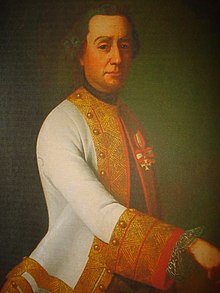# 14
History of Croatia
Croatia first appeared as a duchy in the late 8th century and then as a kingdom in the 10th century. From the 12th century it remained a distinct state with its ruler (ban) and parliament, but it obeyed the kings and emperors of various neighboring powers, primarily Hungary and Austria.
The period from the 15th to the 17th centuries was marked by bitter struggles with the Ottoman Empire. After being incorporated in Yugoslavia for most of the 20th century, Croatia regained independence in 1991.
History of Croatia.
By the 18th century, the Ottoman Empire was driven out of Hungary, and Austria brought the empire under central control. Empress Maria Theresa of Austria was supported by the Croatians in the War of Austrian Succession of 1741–1748 and subsequently made significant contributions to Croatian matters.
With the fall of the Venetian Republic in 1797, its possessions in eastern Adriatic became subject to a dispute between France and Austria.
The Habsburgs eventually secured them (by 1815) and Dalmatia and Istria became part of the empire, though they were in Cisleithania while Croatia and Slavonia were under Hungary.
Croatian romantic nationalism emerged in mid-19th century to counteract the apparent Germanization and Magyarization of Croatia.
The Illyrian movement attracted a number of influential figures from the 1830s on, and produced some important advances in the Croatian language and culture.
In the Revolutions of 1848 Croatia, driven by fear of Magyar nationalism, supported the Habsburg court against Hungarian revolutionary forces.
However, despite the contributions of its ban Jelačić in quenching the Hungarian war of independence, Croatia, not treated any more favourably by Vienna than the Hungarians themselves, lost its domestic autonomy.
In 1867 the Dual Monarchy was created; Croatian autonomy was restored in 1868 with the Croatian–Hungarian Settlement which was comparatively favourable for the Croatians, but still problematic because of issues such as the unresolved status of Rijeka.
| Count Josip Jelačić | |
|---|---|
 | |
| Ivan Zasche, portrait of Josip Jelačić | |
| 83rd Ban of Croatia, Slavonia and Dalmatia |
| Stjepan Radić | |
|---|---|
 | |
was a Croatian politician and the founder of the Croatian People's Peasant Party (Hrvatska pučka seljačka stranka) in 1905. Radić is credited with galvanizing the peasantry of Croatia into a viable political force. Throughout his entire career, he was opposed to the union and, later, Serb hegemony in the first Yugoslavia and became an important political figure in that country.
He was shot in parliament by the Serbian radical politician Puniša Račić. Radić died several weeks later from a serious stomach wound at the age of 57.
This assassination further alienated the Croats and the Serbs.
Josip Kazimir Drašković
(1716–1765),
a brilliant Feldzeugmeister (three-star-general, commander of the artillery) in the Habsburg Monarchy imperial army who played a particularly important role in the Seven Years' War (1756–1763). Count, of the noble House of Drašković (Draskovich).
He is also noted for his love and marriage to a noblewoman of lower descent (Suzana Malatinski) which hurt his brilliant military career and made it impossible for him to advance socially, politically or militarily.
Josip Filipović
Josef von Philippovich | |
|---|---|
Mijat Tomić
(died 1656)
Croatian National Costumes
Thanks to Wiki



No comments:
Post a Comment